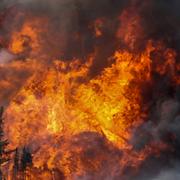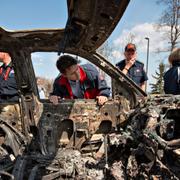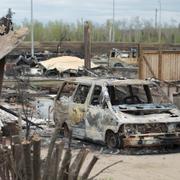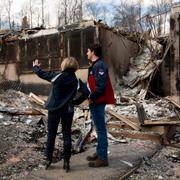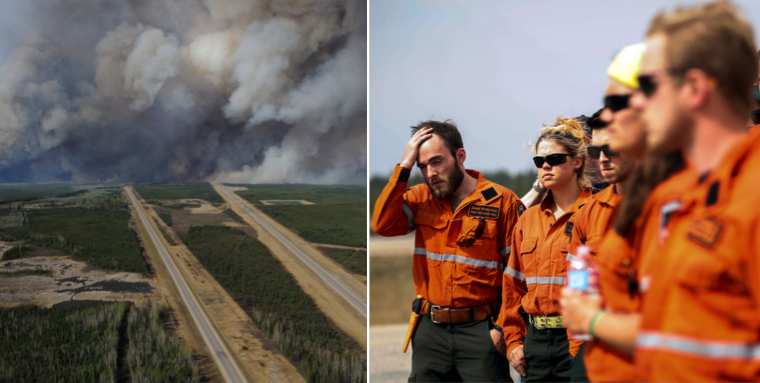
Dyrast i Kanadas historia: Notan kan bli 57 miljarder
Den enorma skogsbranden som härjar i Alberta i Kanada väntas bli den dyraste naturkatastrofen i Kanadas historia. Enligt bedömare kan försäkringsbolagens slutnota hamna på motsvarande 57 miljarder svenska kronor, rapporterar flera medier.
Hittills har omkring 1 600 byggnader förstörts, vilket är betydligt fler än i Slave Lake-branden 2011, den senaste stora skogsbranden i provinsen. Stora delar av staden har utplånats, skriver Reuters.
– Jämförelsevis ser det förödande ut, säger Celyeste Power, talesperson för branschorganisationen Insurance Bureau of Canada till Yahoo Finance.
Samtidigt, eftersom branden fortfarande pågår för fullt, är det för tidigt att spekulera i de slutliga kostnaderna.
bakgrund
De ekonomiskt mest kostsamma katastroferna
Wikipedia (en)
Disasters can be particularly notable for the high costs associated with responding to and recovering from them.
This page lists the economic costs of relatively recent disasters.
2011 Tōhoku earthquake and tsunami, Japan: estimated more than $300 billion
2008 Sichuan earthquake, China, $148 billion
1995 Great Hanshin earthquake $102.5 billion.
Deepwater Horizon oil spill, Gulf of Mexico, 2010: Between $60 and $100billion.
Hurricane Katrina, United States, August 2005: insurances compensated $45 billion;
2011 Thailand floods: $45.7 billion (World Bank estimate of total economic damages and losses)
2011 Christchurch earthquake, New Zealand, $40 billion
Hurricane Ike, United States, September 2008, $29.6 billion
1998 Yangtze River floods, China: $26 billion.
Hurricane Andrew, United States, August 1992: $25 billion
September 11 terrorist attacks, 2001: $20.7 billion;
1994 Northridge earthquake, CA, United States, January 1994: $20 billion;
Chernobyl disaster, 1986: $15 billion estimated cost of direct loss. It is estimated that the damages could accumulate to €235 billion for Ukraine and €201 billion for Belarus in the thirty years following the accident;
2004 Indian Ocean earthquake and tsunami, many nations, $15 billion
Armero tragedy, Colombia, 1985, $7 billion.
2013 Alberta floods, Canada, 2013, estimated $3 billion - $5 billion.
Exxon Valdez oil spill, 1989: The clean-up of the oil spill cost an estimated $2.5 billion; recovery for settlements, $1.1 billion; and the economic loss (fisheries, tourism, etc.) suffered due to the damage to the Alaskan ecosystem was estimated at $2.8 billion;
Cedar Fire, United States, 2003, $2 billion
AZF chemical plant explosion, Toulouse, France, 2001: €1.8 billion
2011 Slave Lake wildfire, Canada, $1.8 billion.
The costs of disasters vary considerably depending on a range of factors, such as the geographical location where they occur. When a disaster occurs in a densely populated area in a wealthy country, the financial damage might be huge, but when a comparable disaster occurs in a densely populated area in a poorer country, the actual financial damage might be relatively small, in part due to a lack of insurance. For example, the 2004 Indian Ocean earthquake and tsunami, with a death toll of over 230,000 people, cost a 'mere' $15 billion, whereas in the Deepwater Horizon oil spill, in which 11 people died, the damages were six-fold.
bakgrund
Slave Lake-branden
Wikipedia (en)
Slave Lake is a small town in northern Alberta, Canada about 200 km northwest of Edmonton and a similar distance southwest of Fort McMurray. It is located on the southeast shore of Lesser Slave Lake at the junction of Highway 2 and Highway 88. Slave Lake is in the Municipal District of Lesser Slave River No. 124.
Slave Lake serves a local centre for the area. The administrative office for the Sawridge First Nation reserve is also located in the town.
Omni är politiskt obundna och oberoende. Vi strävar efter att ge fler perspektiv på nyheterna. Har du frågor eller synpunkter kring vår rapportering? Kontakta redaktionen
